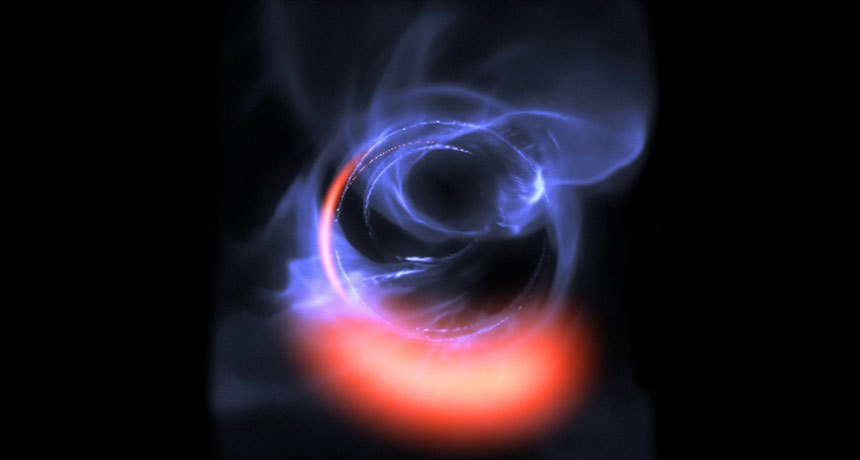Three gas clouds nearly grazed the edge of the Milky Way’s black hole
The observations confirm that the supermassive object really is a black hole

LIVING DANGEROUSLY Scientists spotted flaring gas swirling close to the edge of a black hole, illustrated in this visualization based on a computer simulation.
L. Calçada/ Gravity Consortium/ESO







